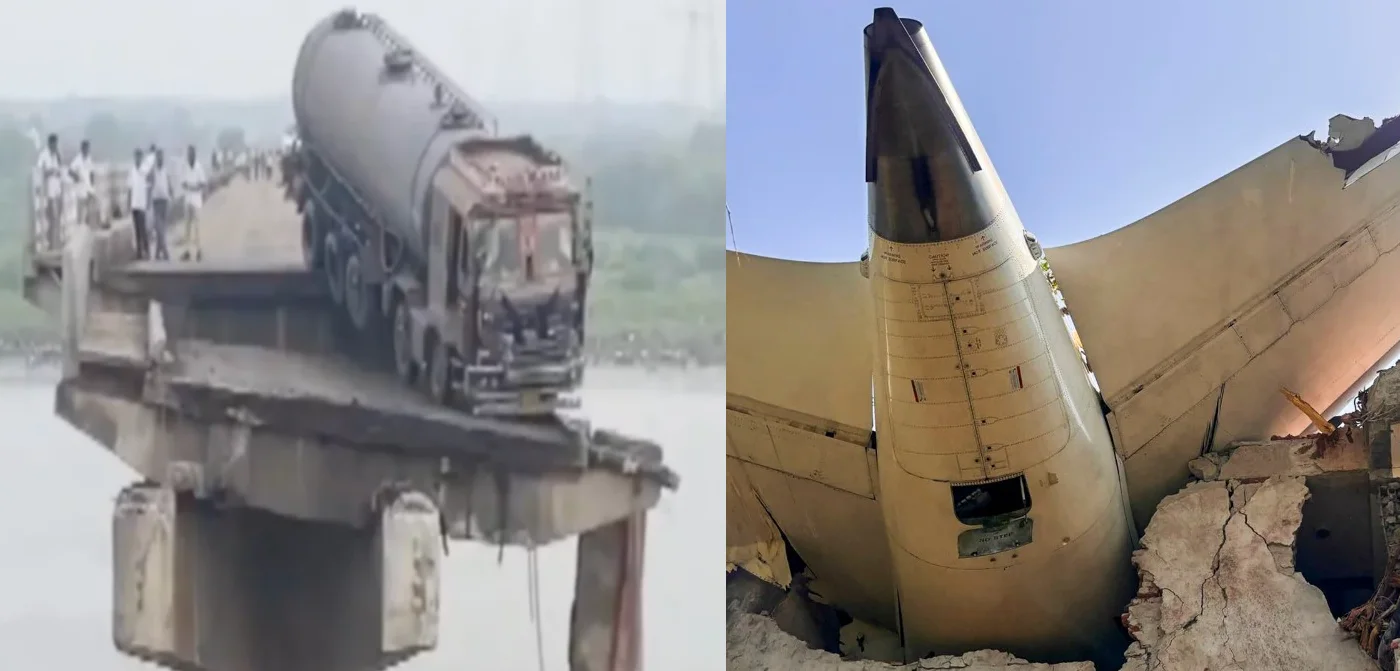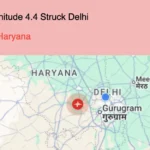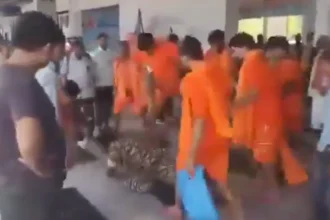Two major tragedies in quick succession cast a dark shadow over the “Gujarat Model” of development, raising urgent questions about maintenance, oversight, and public safety.
Gujarat – July 9, 2025 – Gujarat, a state often lauded for its rapid development and robust infrastructure, finds itself grappling with a deeply disturbing pattern of recent calamities. Hot on the heels of the devastating Air India Flight 171 plane crash in Ahmedabad just last month, which claimed over 260 lives, today’s horrific collapse of the Gambhira bridge in Vadodara has sent shockwaves across the state and the nation. These back-to-back incidents are not just tragic individual events; they are sparking a critical debate: What’s happening with Gujarat’s infrastructure safety?
Table of Contents
Ahmedabad’s Skies Fall Silent: The AI 171 Tragedy
On June 12, 2025, the serene skies over Ahmedabad turned into a scene of unimaginable horror. Air India Flight 171, a Boeing 787-8 Dreamliner en route to London Gatwick, crashed minutes after takeoff, plummeting into the hostel block of B. J. Medical College. The accident resulted in a catastrophic loss of life, with all but one of the 242 people on board perishing, along with 19 on the ground.
Investigations by the Aircraft Accident Investigation Bureau (AAIB), assisted by international experts including the US National Transportation Safety Board (NTSB), are ongoing. Preliminary reports have been submitted, and while the exact cause remains under wraps, the sheer scale of the disaster has left a profound impact. Questions around aircraft maintenance, potential engine failures, and air traffic control protocols are being rigorously examined, with the public keenly awaiting a transparent outcome.
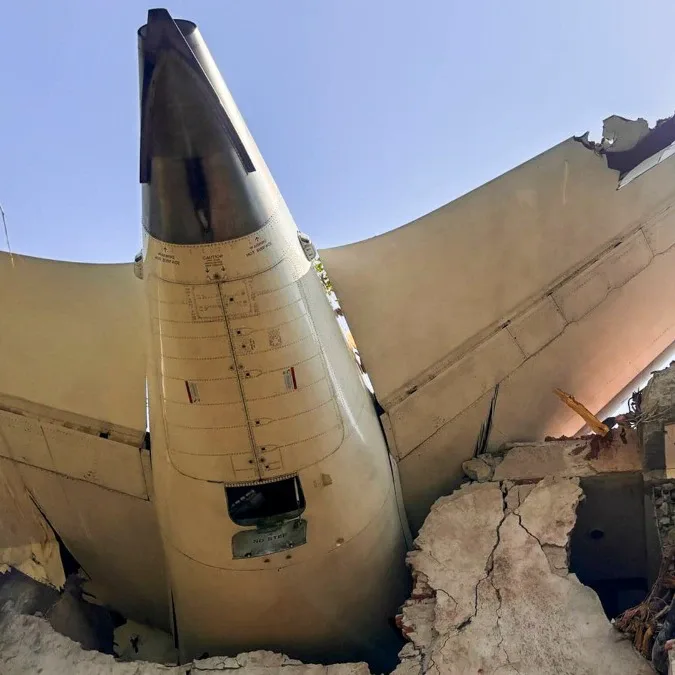
Vadodara’s Bridge of Sorrows: Gambhira’s Grim Collapse
Just weeks later, another tragedy has struck, this time on the ground. This morning, a section of the 43-year-old Gambhira bridge, a vital artery connecting Vadodara and Anand districts over the Mahisagar River, gave way. The collapse, occurring around 7:30 AM IST, sent two trucks, two vans, an auto-rickshaw, and two motorcycles plunging into the swollen river.
Initial reports confirm at least nine fatalities, with rescue operations still intensely underway by NDRF, fire services, and local police. The bridge, constructed in 1985 and reportedly undergoing repairs as recently as last year, had been a subject of local concern regarding its condition. This revelation, coming from Vadodara District Collector Anil Dhameliya, is particularly alarming and has immediately triggered demands for a high-level inquiry into the quality and timeliness of these maintenance works. Gujarat Chief Minister Bhupendra Patel has swiftly ordered technical experts to the site to probe the cause.
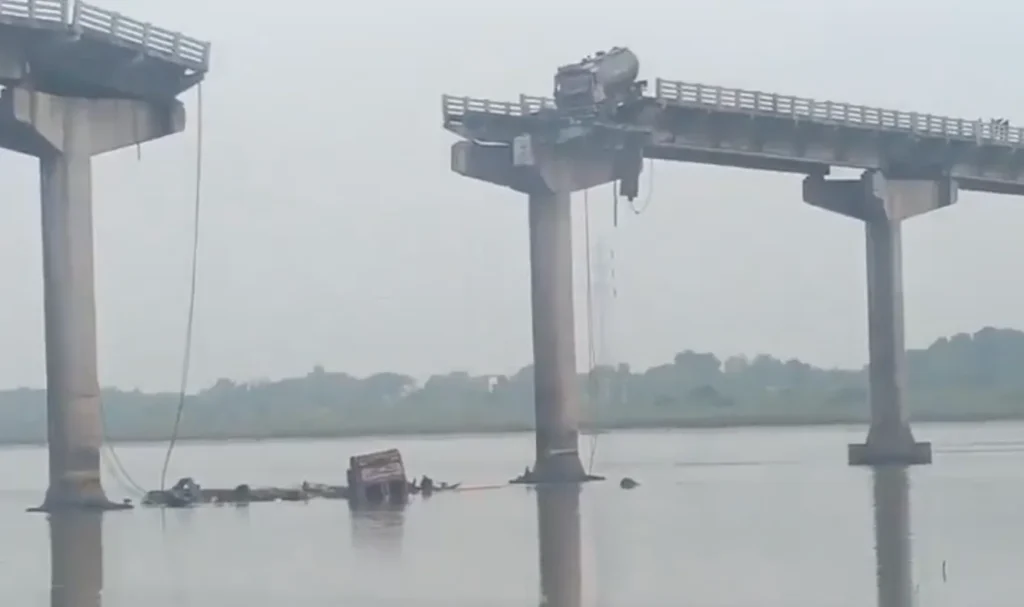
A Disturbing Pattern: More Than Just Coincidence?
The proximity of these two major disasters, while distinctly different in nature, is undeniably unsettling. For many, it evokes grim memories of the October 2022 Morbi bridge collapse, where a pedestrian suspension bridge failure tragically claimed 141 lives. While the context of each incident varies, the recurring theme of infrastructure integrity and public safety is impossible to ignore.
Critics, including opposition leaders like Congress MLA Amit Chavda, are quick to draw parallels and demand accountability. They argue that these incidents expose systemic vulnerabilities in the state’s oversight mechanisms for public infrastructure, from the highly regulated aviation sector to crucial road networks.
Gujarat’s journey as an economic powerhouse has heavily relied on robust infrastructure development. However, these recent events beg the question: Is the pace of development outstripping the quality of maintenance and safety enforcement?
The Road Ahead for Gujarat Infrastructure Safety: Rebuilding Trust and Reinforcing Safety
The Gujarat government has, in response to these incidents, initiated investigations and deployed resources for relief and rescue. Chief Minister Bhupendra Patel had, as recently as July 7, 2025, held a high-level review meeting to assess the condition of roads, bridges, and highways across the state in the wake of heavy monsoon rains, ordering urgent repairs and emphasizing accountability for contractors. This proactive stance, however, is now under immense public scrutiny in light of today’s events.
The focus must now shift to not just immediate relief, but a comprehensive and transparent re-evaluation of all critical infrastructure. This includes:
- Rigorous Safety Audits: Independent, regular, and transparent structural audits for all aging bridges, buildings, and critical infrastructure.
- Enhanced Maintenance Protocols: Strict adherence to maintenance schedules and quality checks for all public works, with severe penalties for non-compliance.
- Technological Integration: Utilizing advanced technologies like AI-powered monitoring systems for early detection of structural weaknesses.
- Public Accountability: Ensuring that all findings from investigations are made public and that responsible parties are held to account.
- Emergency Response Preparedness: Strengthening disaster management and rescue capabilities, as seen in the commendable efforts at both Ahmedabad and Vadodara.
Gujarat’s aspirations for continued growth and prosperity are inextricably linked to the safety and reliability of its infrastructure. The twin tragedies of the Ahmedabad plane crash and the Vadodara bridge collapse serve as a stark and painful reminder that vigilance, robust oversight, and unwavering commitment to public safety must remain paramount. The “Gujarat Model” must now, more than ever, be synonymous with impeccable safety and uncompromised quality.
Keep following Duniya Daily for more such important news and insights!

